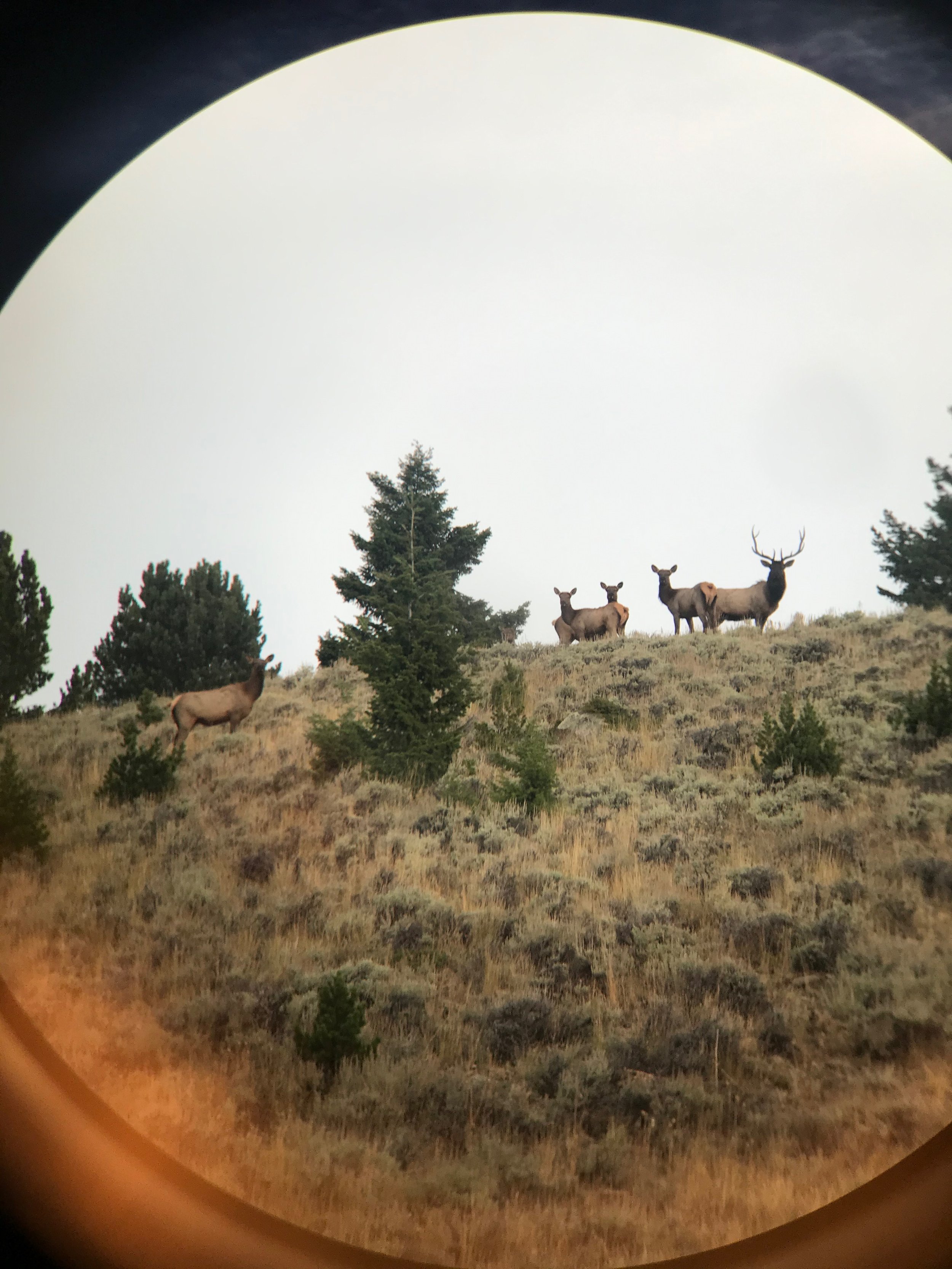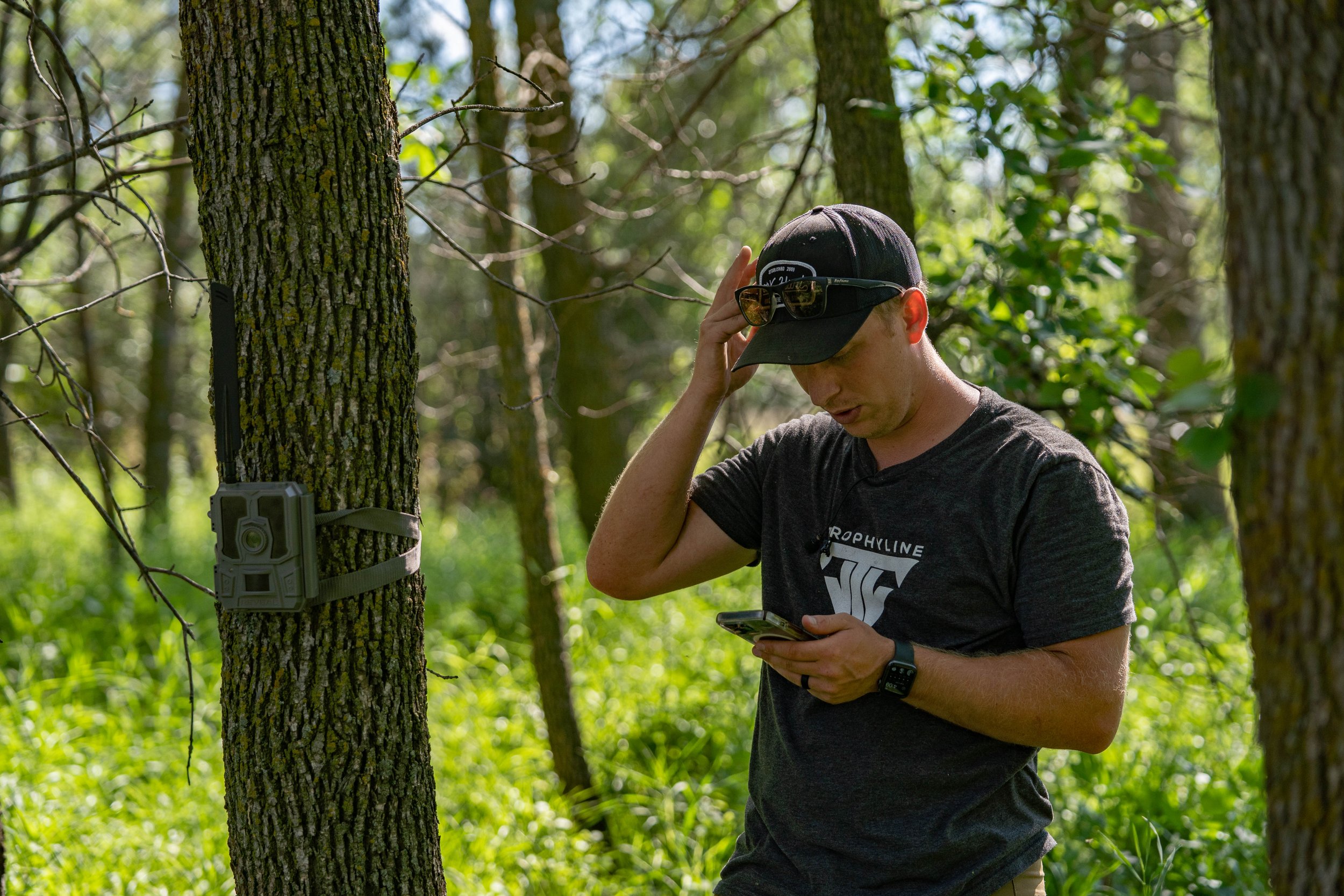By Alex Comstock
Spring is right around the corner for most of us. There's a lot to take in when it comes to spring scouting, and today we're going to be going over what you can accomplish when spring scouting with Zach Ferenbaugh from The Hunting Public. Zach has a ton of experience over the years figuring things out this time of year and knowing what you can look for to help your chances come fall. With that said, enjoy our Q&A below!
Q: At a high level, what are you trying to accomplish during the spring when it comes to scouting?
Zach: For me, what I’m trying to do at this point with the style I hunt is more or less figure out or understand the lay of the land with a new spot. A lot of the spots we’ve already hunted, we have a great idea of how they lay. We may dive into these spots deeper even, but I’d say the main objective of spring scouting is to get a general understanding of a property, especially pieces I’ve never hunted before.
Q: I think sometimes people think they scout a lot, but end up putting it on the back burner. What kind of importance level would you put on spring scouting?
Zach: It all depends on your situation. But if you have a bunch of properties or a new spot that you’ve never been to, then I think it’s more important in that particular situation. I think it can also be an important time of the year to gather more hunting spots. Having different options to hunt is great, and spring is a good time of year to find those spots, and then learn how the terrain sets up, and what those properties consist of. Once you have identified those things, it’s going to make in season scouting (something I do a lot) a heck of a lot easier. Overall, when it comes to an importance level, I would categorize it as a necessary step. But on the other hand, I feel as though some people put TOO much importance on spring scouting in the sense that some people think it’s the only time of the year you can scout. It’s important, but remember that it’s one part of the year round process.
Q: I know buck bedding is an important part of your strategy in the fall. Are you identifying these buck bedding areas in the spring and if so, what are you doing with the information you find?
Zach: Finding buck bedding in the spring is kind of a starting point. What you’re seeing in late winter/early spring is sign from the entire year. You should be able to find a lot of different bedding areas because of this. The trick is knowing which ones are being used at what times of the year and being able to loop back to these accordingly in the fall. When you find a buck bed, you can’t take that as the end of a scouting mission. That’s really just the beginning and you then need to look at everything and try and figure out what time of year that it’s being used. A buck might be using a certain bed in December for example, and if you find that in the spring and hunt it in September, the buck that’s using it could be miles away.
Q: Besides buck bedding, what are the other most important aspects of scouting to you?
Zach: I think just having the open habitat, generally speaking. Everything is mashed down, you can see a ton, and it’s the easiest time of year to notice the small details. One other really cool thing about spring scouting that I really like is you can learn a lot about late season tendencies, which can be a difficult thing to do, especially on public land. You can learn subtle tendencies such as what deer are feeding on when there’s not much food to feed on in the first place. A good example is when we discovered deer were feeding on locus pods during the late season one year. I would have never known that, had I not been scouting around locus trees during the late winter/early spring.
Q: Do you often find differences from year to year on a property when it comes to scouting? If so, what are some variables that people could be looking for that causes deer to shift movement or bedding?
Zach: I definitely think deer are shifting from year to year, depending on what’s on a property. A lot of this in my opinion has to do with early season food sources. One year, bucks may be bedding up on a high point, and between them and their main food destination, which may be a corn field, is pin oaks. Or maybe the pin oaks are right on the edge of their bedding area. That was the case for me this past fall in Iowa. Every bedding area I hunted was right by the pin oaks. During years when those pin oaks aren’t dropping acorns, deer will be in completely different bedding areas. They might not be super far away, but odds are the next year, those bedding areas won’t be in the same places. Additionally, hunting pressure can have a big difference on where deer are spending time from a year to year basis. Deer may not completely abandon a property because of pressure, but they will shift where they bed. That’s why it’s important to come through a piece in the spring, get all of that knowledge, and then use it to your advantage when you return to hunt in the fall. In the spring, I want to identify as many bedding areas as I can, and then come fall, I can bounce from one to the next and continue to scout until I find the hot one loaded with fresh sign. Had you not done the scouting prior, you’d be a step behind when hunting, and wouldn’t be able to adapt to yearly changes as quick.
Q: If you had to pick one thing, do you think there is an overarching theme that often gets overlooked this time of year?
Zach: I think something that gets overlooked way too much is the fact that everything is seasonal. You have to be able to recognize that when you find sign, you can’t immediately “bite” on it. I’m not saying to not take note of it, but don’t take one piece of great looking sign and make something up in your head to make it seem as though it’s the best bedding area in the planet, which can be easy to do. I think this is a really important factor because so many people don’t try and put the other puzzle pieces together. You can’t be too quick to jump the gun and claim a spot as the greatest out there, just because you found some good looking sign. You’ve got to remember that in spring, when you are looking at sign, it could be from any time period during the season. I’m just as guilty of this. Every single year, I find an area that has some good looking sign, and I make it out to be this amazing spot, and go to hunt it right away, only to find it to be dead. The key though is that when this happens, you don’t give up on the spot, but figure out why deer aren’t using it currently, or when they will be in there. The reason I’m stressing this so much is because I’m so guilty of it year in and year out. That’s why it’s so important to continue your scouting throughout the season, and use what you learned in the spring as your base knowledge.
Q: So what you’re telling me, is that the general overall rule of spring scouting is spring is your baseline of information, and then you combine that with what you learn through in season scouting to be more successful and be ahead of where you would be if you had not scouted in the spring at all?
Zach: 100%. All the spots we’ve shot bucks have resulted from a baseline scout in the spring, learning the property, and then subtle adjustments through in season scouting. Examples can range through many instances, but even if you know you’re going to be hunting an area during the rut, maybe you’ll find a bunch of doe bedding during your spring scouting, and then you might be able to deduce that spot will be good during the rut because there’s so many does there. Basically, spring is just a part of the pie, but it will put you ahead tremendously come fall.
Be sure to check out The Hunting Public on YouTube HERE and you can visit their website HERE.








































